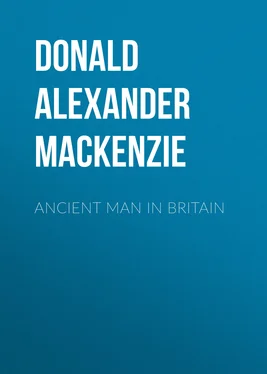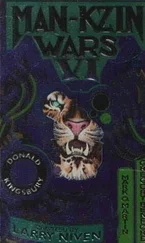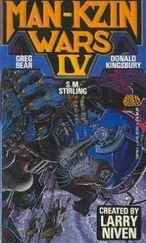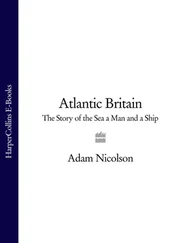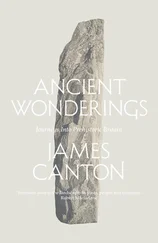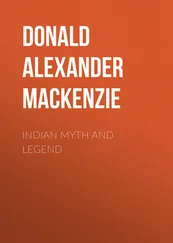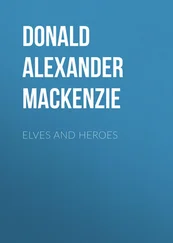Donald Alexander Mackenzie - Ancient Man in Britain
Здесь есть возможность читать онлайн «Donald Alexander Mackenzie - Ancient Man in Britain» — ознакомительный отрывок электронной книги совершенно бесплатно, а после прочтения отрывка купить полную версию. В некоторых случаях можно слушать аудио, скачать через торрент в формате fb2 и присутствует краткое содержание. Жанр: foreign_prose, История, Биология, foreign_edu, foreign_antique, на английском языке. Описание произведения, (предисловие) а так же отзывы посетителей доступны на портале библиотеки ЛибКат.
- Название:Ancient Man in Britain
- Автор:
- Жанр:
- Год:неизвестен
- ISBN:нет данных
- Рейтинг книги:3 / 5. Голосов: 1
-
Избранное:Добавить в избранное
- Отзывы:
-
Ваша оценка:
- 60
- 1
- 2
- 3
- 4
- 5
Ancient Man in Britain: краткое содержание, описание и аннотация
Предлагаем к чтению аннотацию, описание, краткое содержание или предисловие (зависит от того, что написал сам автор книги «Ancient Man in Britain»). Если вы не нашли необходимую информацию о книге — напишите в комментариях, мы постараемся отыскать её.
Ancient Man in Britain — читать онлайн ознакомительный отрывок
Ниже представлен текст книги, разбитый по страницам. Система сохранения места последней прочитанной страницы, позволяет с удобством читать онлайн бесплатно книгу «Ancient Man in Britain», без необходимости каждый раз заново искать на чём Вы остановились. Поставьте закладку, и сможете в любой момент перейти на страницу, на которой закончили чтение.
Интервал:
Закладка:
The horse appears to have been domesticated. There is at Saint Michel d'Arudy a "Celtic" horse depicted with a bridle, while at La Madeleine was found a "bâton de commandement" on which a human figure, with a stave in his right hand, walks past two horses which betray no signs of alarm.
Our knowledge is scanty regarding the races that occupied Europe during Magdalenian times. In addition to the Crô-Magnons there were other distinctive types. One of these is represented by the Chancelade skeleton found at Raymonden shelter. Some think it betrays Eskimo affinities and represents a racial "drift" from the Russian steppes. In his Ancient Hunters Professor Sollas shows that there are resemblances between Eskimo and Magdalenian artifacts.
The Magdalenian culture reached England, although it never penetrated into Italy, and was shut out from the greater part of Spain. It has been traced as far north as Derbyshire, on the north-eastern border of which the Cresswell caves have yielded Magdalenian relics, including flint-borers, engravers, &c., and bone implements, including a needle, an awl, chisels, an engraving of a horse on bone, &c. Kent's Cavern, near Torquay in Devonshire, has also yielded Magdalenian flints and implements of bone, including pins, awls, barbed harpoons, &c.
During early Magdalenian times, however, our native land did not offer great attractions to Continental people. The final glacial epoch may have been partial, but it was severe, and there was a decided lowering of the temperature. Then came a warmer and drier spell, which was followed by the sixth partial glaciation. Thereafter the "great thaw" opened up Europe to the invasion of new races from Asia and Africa.
Three distinct movements of peoples in Europe can be traced in post-Magdalenian times, and during what has been called the "Transition Period", between the Upper Palæolithic and Lower Neolithic Ages or stages. The ice-cap retreated finally from the mountains of Scotland and Sweden, and the reindeer migrated northward. Magdalenian civilization was gradually broken up, and the cave art suffered sharp decline until at length it perished utterly. Trees flourished in areas where formerly the reindeer scraped the snow to crop moss and lichen, and rich pastures attracted the northward migrating red deer, the roe-deer, the ibex, the wild boar, wild cattle, &c.
The new industries are known as the Tardenoisian, the Azilian, and the Maglemosian.

Geometric or "Pygmy" Flints. (After Breuil.)
1, From Tunis and Southern Spain. 2, From Portugal. 3, 4, Azilian types. 5, 6, 7, Tardenoisian types.
Tardenoisian flints are exceedingly small and beautifully worked, and have geometric forms; they are known as "microliths" and "pygmy flints". They were evidently used in catching fish, some being hooks and others spear-heads; and they represent a culture that spread round the Mediterranean basin: these flints are found in northern Egypt, Tunis, Algeria, and Italy; from Italy they passed through Europe into England and Scotland. A people who decorated with scenes of daily life rock shelters and caves in Spain, and hunted red deer and other animals with bows and arrows, were pressing northward across the new grass-lands towards the old Magdalenian stations. Men wore pants and feather head-dresses; women had short gowns, blouses, and caps, as had the late Magdalenians, and both sexes wore armlets, anklets, and other ornaments of magical potency. Females were nude when engaged in the chase. The goddess Diana had evidently her human prototypes. There were ceremonial dances, as the rock pictures show; women lamented over graves, and affectionate couples—at least they seem to have been affectionate—walked hand in hand as they gradually migrated towards northern Spain, and northern France and Britain. The horse was domesticated, and is seen being led by the halter. Wild animal "drives" were organized, and many victims fell to archer and spearman. Arrows were feathered; bows were large and strong. Symbolic signs indicate that a script similar to those of the Ægean area, the northern African coast, and pre-dynastic Egypt was freely used. Drawings became conventional, and ultimately animals and human beings were represented by signs. This culture lasted after the introduction of the Neolithic industry in some areas, and in others after the bronze industry had been adopted by sections of the people.
Конец ознакомительного фрагмента.
Текст предоставлен ООО «ЛитРес».
Прочитайте эту книгу целиком, купив полную легальную версию на ЛитРес.
Безопасно оплатить книгу можно банковской картой Visa, MasterCard, Maestro, со счета мобильного телефона, с платежного терминала, в салоне МТС или Связной, через PayPal, WebMoney, Яндекс.Деньги, QIWI Кошелек, бонусными картами или другим удобным Вам способом.
1
Book of Llan Daf.
2
Dr. Hugh Cameron Gillies in Home Life of the Highlanders , Glasgow, 1911, pp. 85 et seq.
3
A pestle or stone was used to pound grain in hollowed slabs or rocks before the mechanical mill was invented.
4
Primitive Man.
5
Men of the Old Stone Age (1916), pp. 240-1.
6
British Museum—A Guide to the Antiquities of the Stone Age , p. 76 (1900).
7
Miller had adopted the "stratification theory" of Professor William Robertson of Edinburgh University, who, in his The History of America (1777), wrote: "Men in their savage state pass their days like the animals round them, without knowledge or veneration of any superior power".
8
Custom and Myth (1910 edition), p. 13. Lang's views regarding flints are worthless.
9
The last division of the Tertiary period.
10
It must be borne in mind that the lengths of these periods are subject to revision. Opinion is growing that they were not nearly so long as here stated.
11
Journal of the Royal Anthropological Institute , Vol. XLIII, 1913.
12
For principal references see The Races of Europe , W. Z. Ripley, pp. 172 et seq. , and The Anthropological History of Europe , John Beddoe (Rhind lectures for 1891; revised edition, 1912), p. 47.
13
That is, the tall representatives of the Crô-Magnon races.
14
Men of the Old Stone Age , pp. 335-6.
15
Myths of the New World , p. 163.
16
Cults of the Greek States , Vol. V. p. 243.
17
Budge, Gods of the Egyptians . Vol. I, p. 203.
18
De Groot, The Religious System of China , Book I, pp. 216-7.
19
Ibid. , Book I, pp. 28 and 332.
20
I am indebted to the Abbé Breuil for this information which he gave me during the course of a conversation.
Читать дальшеИнтервал:
Закладка:
Похожие книги на «Ancient Man in Britain»
Представляем Вашему вниманию похожие книги на «Ancient Man in Britain» списком для выбора. Мы отобрали схожую по названию и смыслу литературу в надежде предоставить читателям больше вариантов отыскать новые, интересные, ещё непрочитанные произведения.
Обсуждение, отзывы о книге «Ancient Man in Britain» и просто собственные мнения читателей. Оставьте ваши комментарии, напишите, что Вы думаете о произведении, его смысле или главных героях. Укажите что конкретно понравилось, а что нет, и почему Вы так считаете.
